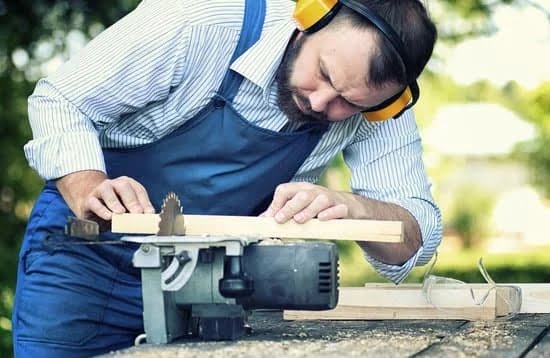Basswood, a popular choice for woodworking, is known for its versatility and ease of use. Whether you’re a beginner or an experienced woodworker, basswood offers a range of properties that make it an ideal material for various projects. In this article, we’ll explore the qualities and uses of basswood in woodworking to determine whether it is indeed a good option for your next project.
When considering the question “is basswood good for woodworking,” it’s important to understand the properties that make this wood stand out. From its lightweight nature to its fine texture and minimal grain pattern, basswood presents several advantages that appeal to woodworkers. Additionally, its ability to hold intricate details when carved or shaped adds to its appeal as a top choice for many craftsmen.
As we delve deeper into the world of basswood, we’ll also examine its rich history and how it has been utilized in various woodworking projects throughout time. Understanding the origins and traditional uses of basswood can provide valuable insight into why it continues to be a favored material in today’s woodworking industry. Join us as we uncover the reasons why basswood remains an excellent option for woodworking enthusiasts.
Properties of Basswood
Basswood is an ideal wood for woodworking due to its unique properties that make it suitable for a wide range of projects. Here are some key properties of basswood that make it stand out as a favorite among woodworkers:
1. Easy to work with: One of the main reasons why basswood is popular among woodworkers is its ease of working. It has a straight, fine grain and a uniform texture, making it easy to cut, shape, and carve. This makes it an excellent choice for intricate woodworking projects such as carving and sculpting.
2. Lightweight yet strong: Basswood is known for being lightweight while still offering good strength and stability. This makes it an excellent choice for projects such as furniture-making, where a balance between weight and strength is important.
3. Accepts finishes well: Basswood has the ability to accept a variety of finishes, including paint, stain, and varnish, making it versatile for different woodworking projects. Its uniform texture allows for an even application of finishes, resulting in a smooth and attractive final product.
4. Limited warping and shrinking: Compared to other woods commonly used in woodworking, basswood exhibits minimal warping and shrinking over time. This makes it a reliable choice for long-lasting projects such as cabinetry and millwork.
The History and Uses of Basswood in Woodworking
Basswood has a long and rich history in woodworking, dating back centuries. Its popularity can be attributed to the wood’s lightweight nature and ease of carving, making it an ideal choice for a wide range of woodworking projects. Throughout history, basswood has been used for various applications, from intricate carvings to furniture making.
Historical Uses
Historically, basswood has been used by Native American tribes for carving intricate designs and creating functional tools and utensils. The light color and fine grain of this wood made it perfect for creating detailed carvings. European settlers also recognized the versatility of basswood and utilized it in their woodworking endeavors.
Modern Applications
In modern woodworking, basswood continues to be a popular choice for carving and crafting musical instruments, such as guitars and stringed instruments. Its soft texture makes it easy to work with, allowing for precise shaping and detailing. Additionally, basswood is often used in architectural models, woodturning projects, and even as a medium for woodblock printing due to its smooth surface.
Basswood in Furniture Making
Basswood is also commonly used in furniture making, particularly as a secondary or internal wood due to its lightweight nature. It is often used as a core wood that is then veneered with more durable hardwoods, providing structural stability while reducing the overall weight of the furniture piece. This makes basswood an excellent choice for creating ornate furniture pieces that require intricate detailing.
Overall, the history of basswood in woodworking is rich and diverse, with its uses spanning across various cultures and time periods. Whether it be for carving decorative items or constructing fine furniture pieces, basswood continues to be valued for its versatility and ease of use in woodworking projects.
Pros and Cons of Using Basswood for Woodworking Projects
Basswood is a popular choice for woodworking projects due to its unique properties, but there are some drawbacks to consider as well. One of the main advantages of using basswood is its easy workability. This type of wood is known for being lightweight and soft, making it easy to carve, shape, and sand. Additionally, basswood has a fine and even texture which allows for smooth finishes, making it ideal for intricate woodworking designs.
Another benefit of using basswood for woodworking projects is its excellent gluing and staining properties. It readily accepts adhesives and holds nails and screws well, making it a versatile option for a variety of woodworking applications. In addition, basswood can be easily painted or stained to achieve the desired look for your project.
However, it’s important to consider the potential downsides of using basswood for woodworking projects. While it’s easy to work with, its softness also makes it more prone to dents and scratches. This means that projects made from basswood may require more careful handling and maintenance compared to harder woods. Additionally, basswood is not as durable as some other hardwoods, so it may not be suitable for items that will be subject to heavy wear and tear.
When considering whether basswood is good for woodworking projects, it’s important to weigh these pros and cons based on the specific needs of your project. Overall, while basswood’s ease of workability make it a popular choice for carving and intricate designs, its softer nature may not be suitable for all types of woodworking projects.
Tips for Working With Basswood
Basswood is an excellent choice for woodworking projects due to its desirable properties and versatility. When working with basswood, there are certain techniques and tools that can help maximize its potential.
One of the key benefits of using basswood for woodworking is its softness, which makes it easy to carve and shape. This property allows for intricate details and smooth finishes, making it perfect for carving and whittling projects. When working with basswood, it is important to use sharp tools to achieve clean cuts and prevent splintering. Carving tools such as gouges, chisels, and knives are commonly used when working with this wood.
Another important technique when working with basswood is proper sanding. Due to its softness, basswood can absorb stains and finishes unevenly if not sanded properly. Starting with a finer grit sandpaper and gradually progressing to a finer grit will help achieve a smooth surface, ensuring an even finish when staining or painting the wood.
When it comes to shaping basswood for more intricate woodworking projects, using a coping saw or band saw can be beneficial. These tools allow for more precise cuts and intricate designs when working with basswood.
| Techniques | Tools |
|---|---|
| Carving and Shaping | Gouges, Chisels, Knives |
| Sanding | Sandpaper (fine grit) |
| Shaping | Coping saw, Band saw |
Examples of Basswood Woodworking Projects
Basswood is a highly sought-after type of wood for woodworking projects due to its versatility and ease of use. It is a preferred choice for both beginner and experienced woodworkers because of its fine, even texture and minimal grain. This makes it ideal for carving, turning, and shaping, allowing for intricate details in woodworking projects.
One of the properties that make basswood good for woodworking is its light weight, which makes it easy to handle and carve. Additionally, basswood does not splinter easily, making it a safe option for woodworking projects. Its pale white to light brown color also provides a neutral base for various finishes, such as staining or painting.
Woodworkers have been using basswood for centuries in a wide range of applications. From detailed carvings and sculptures to cabinetry and musical instruments, basswood has proven to be a reliable and versatile choice. Its consistent quality and workability have made it popular across different cultures and time periods.
When working with basswood, woodworkers should take advantage of its easy carving properties by using sharp tools such as chisels and gouges. Its softness also allows for smooth sanding and shaping when creating intricate designs or smooth finishes on woodworking projects. Overall, the unique properties of basswood make it an excellent choice for a variety of woodworking projects.
| Properties | Benefits |
|---|---|
| Lightweight | Easy to handle and carve |
| Minimal grain | Ideal for detailed carvings |
| Does not splinter easily | Safe option for woodworking projects |
Comparing Basswood to Other Woods Used in Woodworking
When it comes to woodworking, there are a variety of wood options to choose from. Each type of wood has its own unique properties that make it suitable for different projects. One popular option that is frequently compared to other woods is basswood.
Strength and Durability
One of the key considerations when comparing different types of wood for woodworking is their strength and durability. Basswood is known for being relatively soft compared to other hardwoods like oak or maple. While this can make it easier to work with, it may not be the best choice for projects that require a more durable wood.
Grain and Texture
Another factor to consider when comparing basswood to other woods is its grain and texture. Basswood has a fine, even texture with a straight grain, making it ideal for carving and shaping. This sets it apart from woods with a more pronounced grain pattern, such as oak or mahogany.
Cost and Availability
The cost and availability of different types of wood are also important factors in the decision-making process for woodworking projects. Basswood is generally more affordable and readily available compared to many other hardwoods, making it a popular choice for both beginner and experienced woodworkers.
Where to Source High-Quality Basswood for Woodworking Projects
When it comes to finding high-quality basswood for your woodworking projects, it’s important to know where to look. Whether you’re a seasoned woodworker or just starting out, having access to reliable sources is crucial for obtaining the best materials. Here are some options for sourcing top-notch basswood:
- Specialty Woodworking Stores: Many cities have stores that specialize in selling various types of wood for woodworking purposes. These stores often carry a selection of basswood in different sizes and grades, making it easy to find exactly what you need for your project.
- Online Suppliers: With the convenience of online shopping, there are numerous suppliers that offer high-quality basswood for woodworking projects. You can browse through a wide range of options, compare prices, and have the wood delivered right to your doorstep.
- Lumberyards: Local lumberyards may also carry basswood among their inventory. Visiting a lumberyard allows you to personally inspect the wood and select the perfect pieces based on your specific requirements.
Keep in mind that when sourcing basswood for woodworking, it’s essential to consider factors such as the quality of the wood, pricing, and the supplier’s reputation. Additionally, if you’re purchasing online, be sure to factor in shipping costs and delivery times.
Ultimately, whether you choose a specialty store, an online supplier, or a local lumberyard, finding high-quality basswood for your woodworking projects is key to achieving excellent results. Take the time to explore your options and select the best source that meets your needs and budget.
Conclusion
In conclusion, it is evident that basswood is indeed good for woodworking. Its versatile nature, lightweight structure, and ease of use make it a popular choice among woodworkers. The properties of basswood, such as its fine texture and minimal grain, make it ideal for carving and intricate woodworking projects. Additionally, its historical significance and various uses in woodworking demonstrate the longevity and practicality of this type of wood.
While there are some cons to using basswood, such as its susceptibility to dents and scratches, the overall benefits outweigh the drawbacks. With the right techniques and tools, working with basswood can be a rewarding experience for woodworkers of all levels. Additionally, the availability of high-quality basswood from reputable sources ensures that woodworkers can obtain the best materials for their projects.
When compared to other woods commonly used in woodworking, basswood holds its own with its unique set of properties and advantages. It may not be suitable for all types of projects, but it certainly has a place in the woodworking community. Whether it’s for carving small figurines or constructing detailed models, basswood has proven itself as a valuable wood for various woodworking endeavors.
Frequently Asked Questions
What Are the Disadvantages of Basswood?
Basswood does have some disadvantages, primarily related to its softness. While this makes it easy to work with, it also means that it can dent and scratch more easily than harder woods. It is also not as durable as other hardwoods, so it may not be the best choice for high-traffic areas or heavy-duty use.
Is Basswood Better Than Balsa?
When comparing basswood and balsa, it really depends on the specific application. Balsa is even softer and lighter than basswood, making it great for certain crafts and model-building, but not suitable for furniture or other applications that require more durability.
Basswood, on the other hand, is a good middle-ground option for woodworking and carving due to its balance of ease of use and strength.
Can You Make Furniture From Basswood?
Yes, basswood is commonly used for making furniture. Its relatively light weight makes it ideal for items like chairs, tables, and cabinets that need to be moved around frequently. Additionally, its smooth grain texture and light color make it a popular choice for staining or painting to achieve different aesthetic looks in furniture pieces.

Hi everyone! I’m a woodworker and blogger, and this is my woodworking blog. In my blog, I share tips and tricks for woodworkers of all skill levels, as well as project ideas that you can try yourself.





